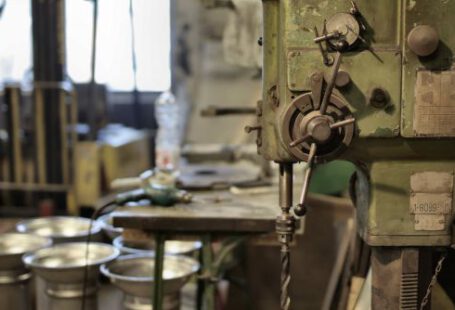Technology has had a tremendous impact on the construction industry. With advancements in engineering, construction equipment has evolved from manual labor to complex machines that can handle heavy-duty tasks with minimal human intervention. One of the most important aspects of this evolution is ergonomics. Ergonomics is the science of designing equipment and tools to best suit a person’s physical and mental capabilities and limitations. In the construction industry, ergonomics is essential in designing construction equipment to ensure operators are comfortable and safe while carrying out their tasks.
What is Ergonomics?
Ergonomics is the science of designing tools and equipment to fit the user and the work environment. It takes into account the physical and mental capabilities and limitations of the user, as well as the environment in which the tool or equipment is used. Ergonomics focuses on creating equipment and tools that are comfortable to use and can help reduce the risk of injury or strain.
Benefits of Ergonomics in Construction Equipment Design
Ergonomics is an important factor in the design of construction equipment. It can help to improve the efficiency and safety of the equipment, as well as the comfort of the operator. Some of the benefits of ergonomics in construction equipment design include:
- Reduced fatigue: Ergonomic design can help to reduce operator fatigue by ensuring the equipment is comfortable to operate and is easy to reach and use.
- Improved safety: Ergonomic design can help to reduce the risk of injury or strain for the operator, as well as make the equipment easier to use.
- Increased efficiency: Ergonomic design can help to improve the efficiency and productivity of the equipment, as the operator is less likely to make mistakes and is able to work faster.
- Enhanced comfort: Ergonomics can help to improve the comfort of the operator, as the equipment is designed to fit the physical and mental capabilities of the user.
Ergonomic Considerations in Construction Equipment Design
When designing construction equipment, there are several ergonomic considerations that must be taken into account. These include:
- Design of the control console: The design of the control console should be ergonomic, with controls that are easy to reach and use. It should also have sufficient space for the operator to move and operate the equipment comfortably.
- Weight and size of the equipment: The weight and size of the equipment should be suitable for the work environment and the operator’s physical capabilities.
- Vibration control: Vibration control systems should be installed to reduce the risk of strain and injury from vibration.
- Visibility: The design of the equipment should allow for good visibility of the work area, so the operator can work safely and efficiently.
- Noise control: Noise control systems should be installed to reduce the risk of hearing loss or damage from loud noises.
Conclusion
Ergonomics is an essential factor in the design of construction equipment. It helps to improve the efficiency and safety of the equipment, as well as the comfort of the operator. When designing construction equipment, it is important to consider the ergonomic aspects, such as the design of the control console, the weight and size of the equipment, vibration control, visibility, and noise control. By taking these factors into account, construction equipment can be designed to be more comfortable and safer for the operator.






